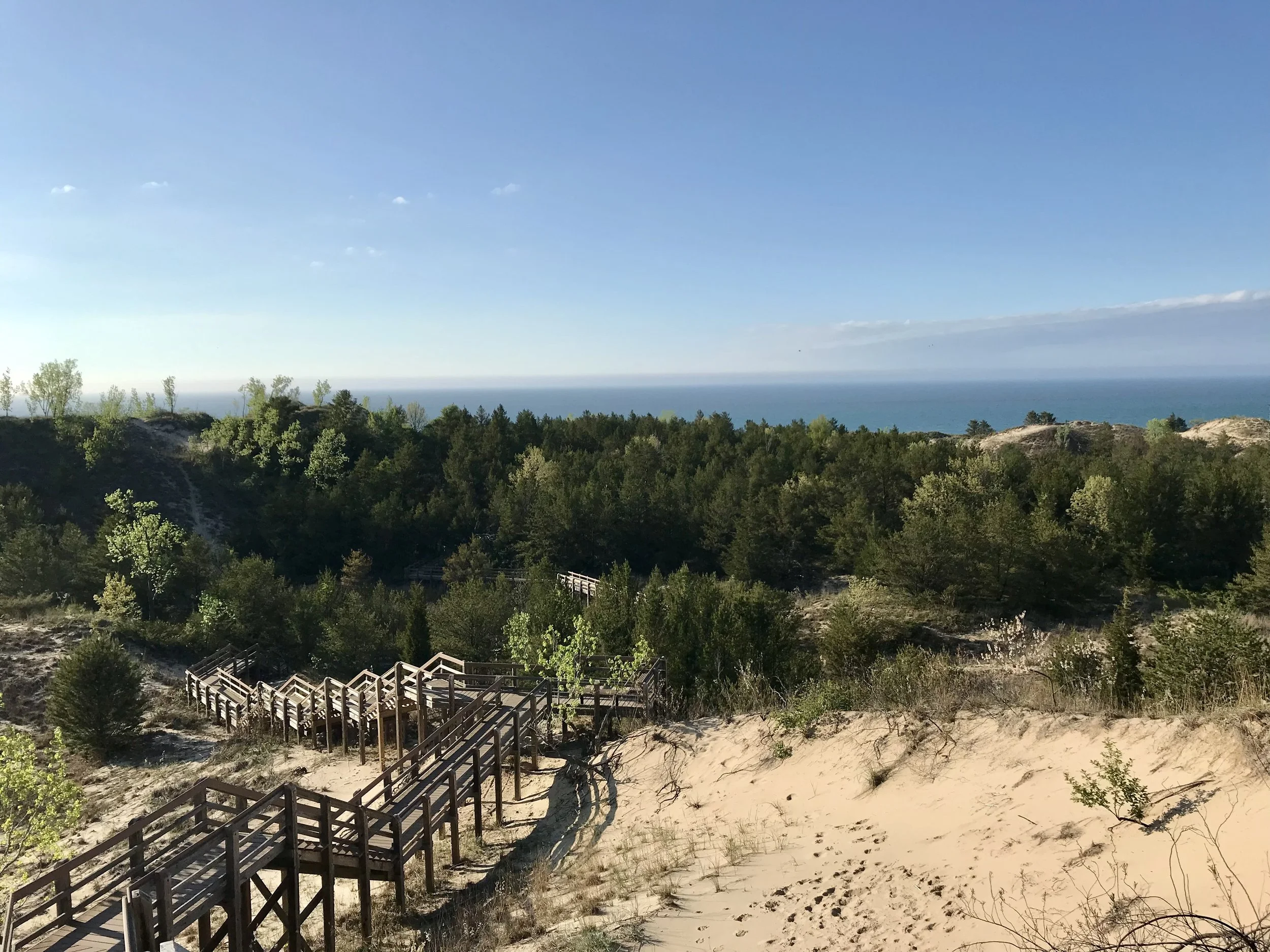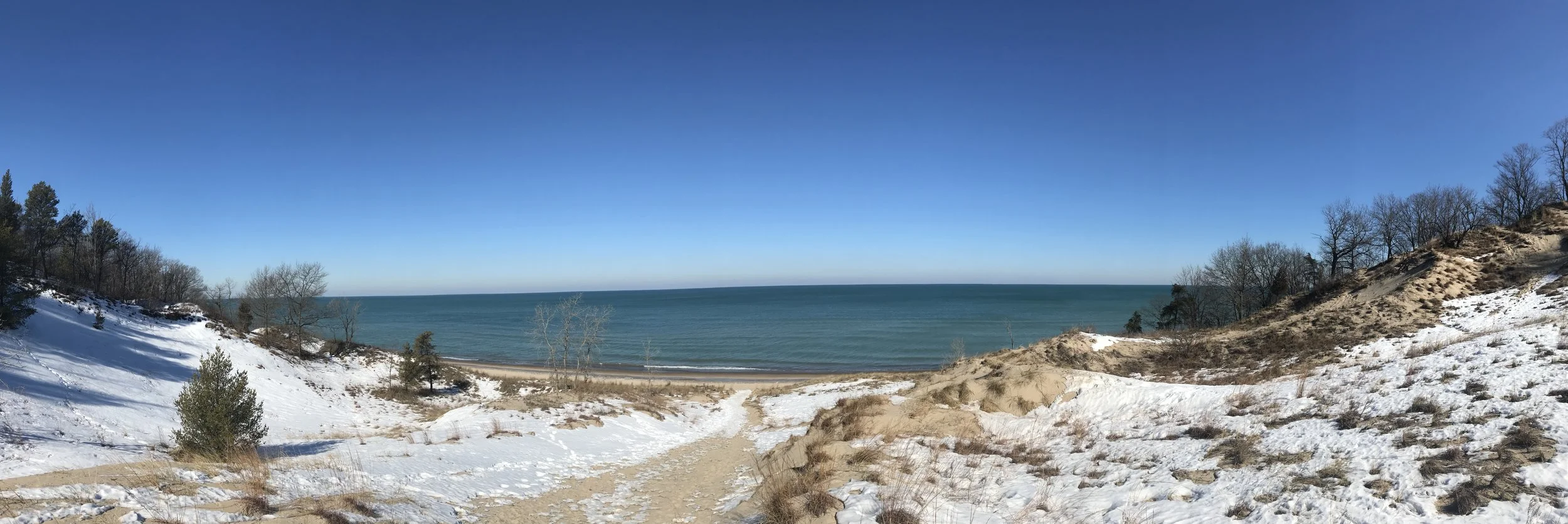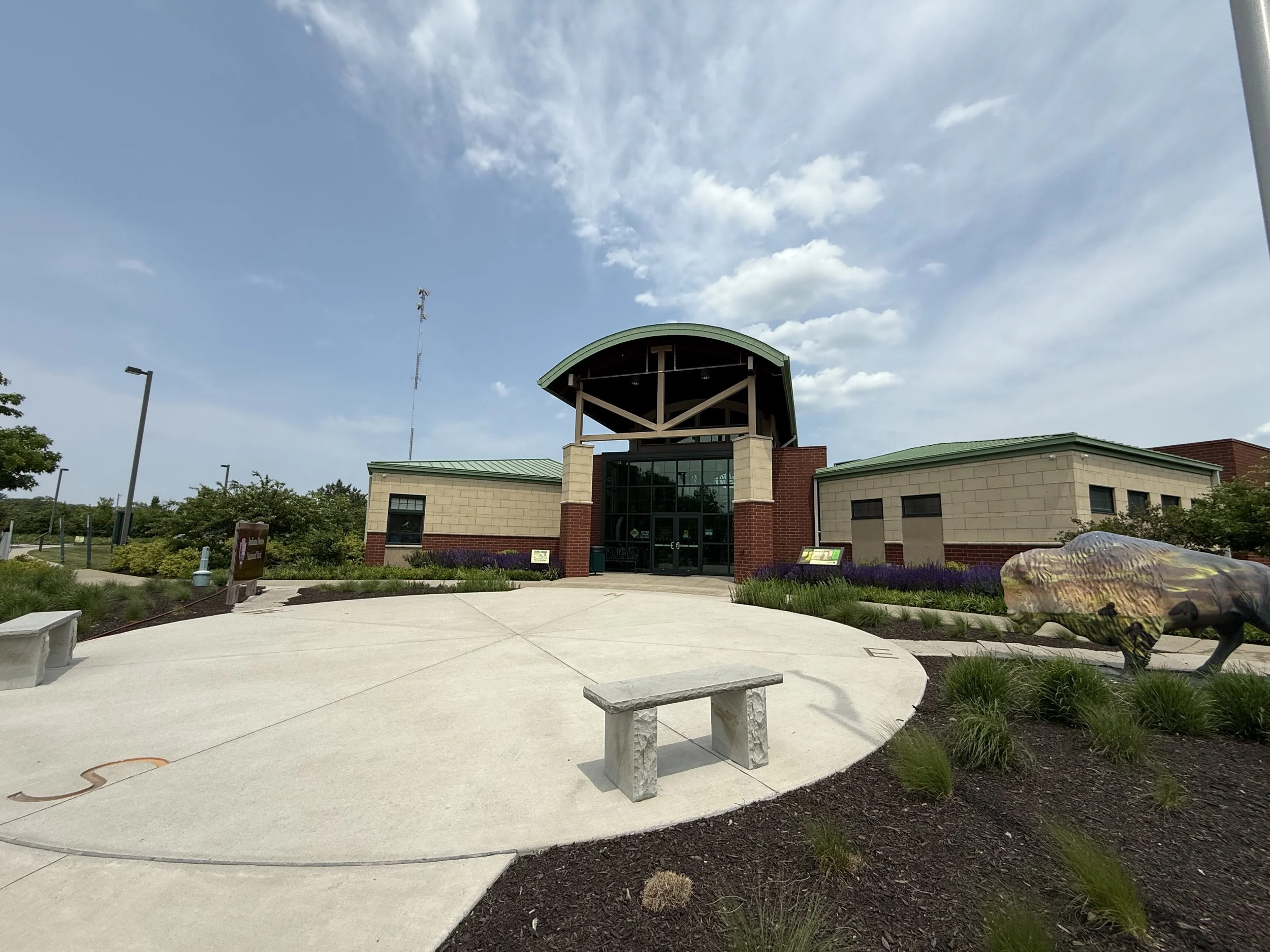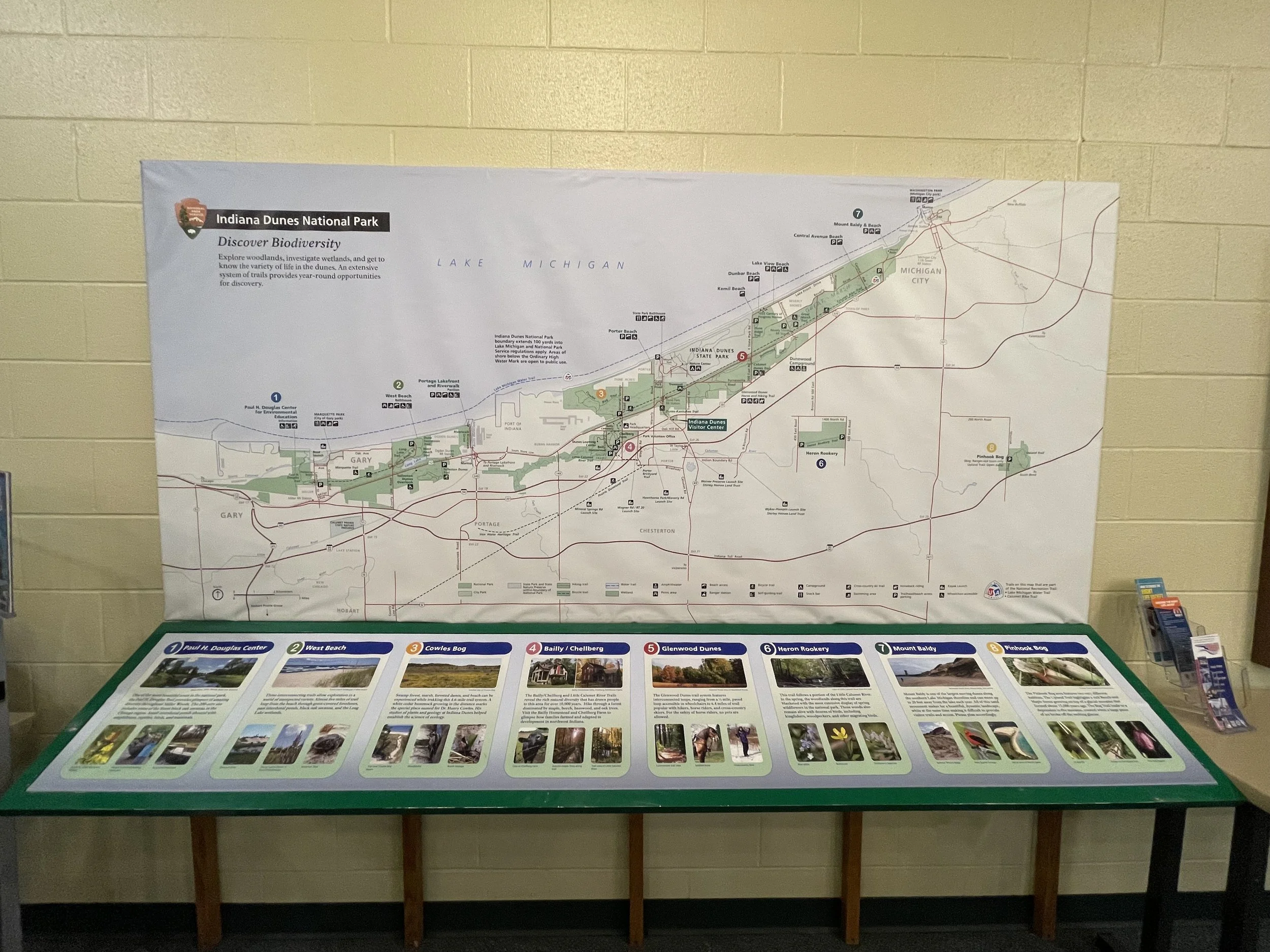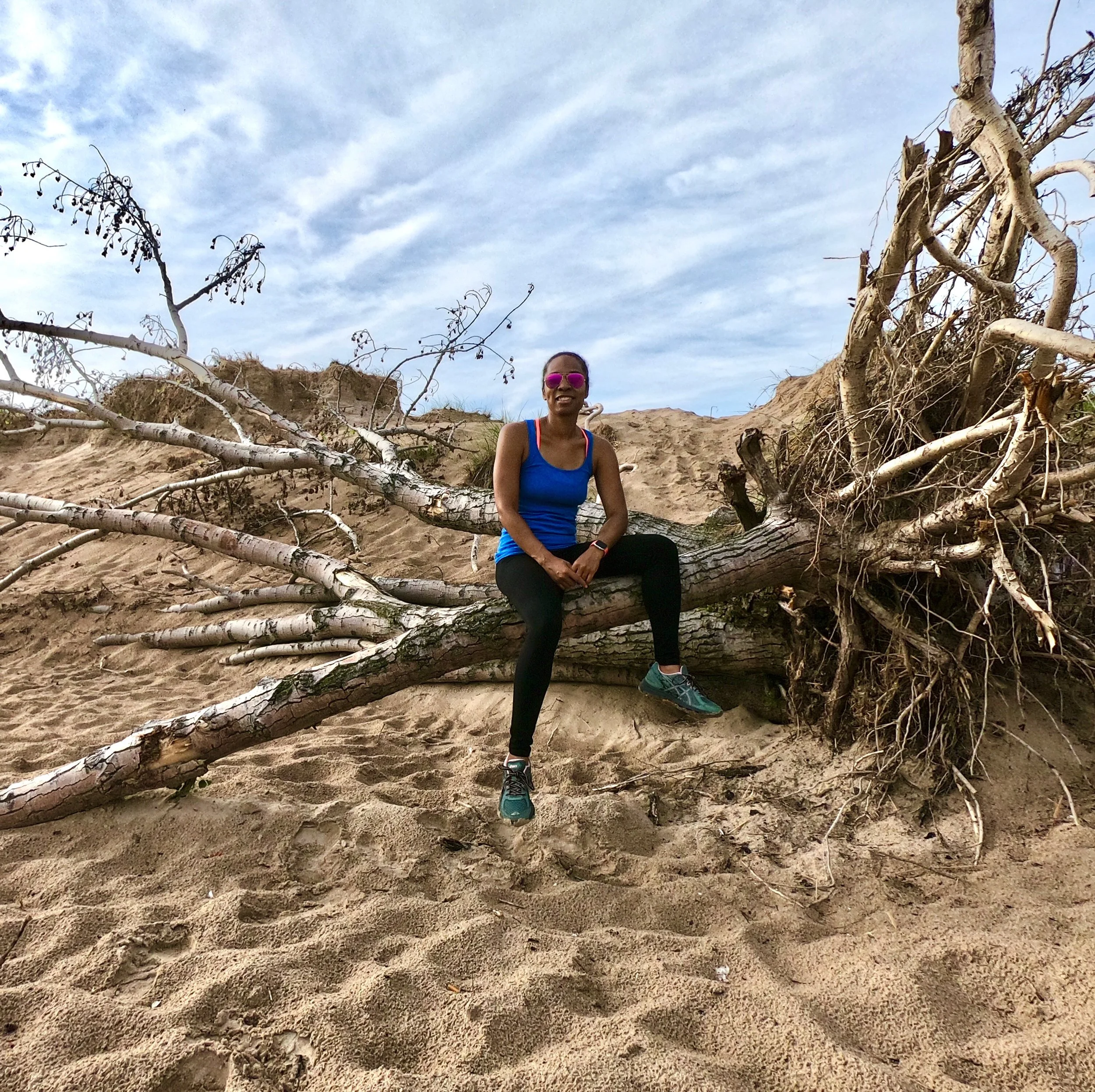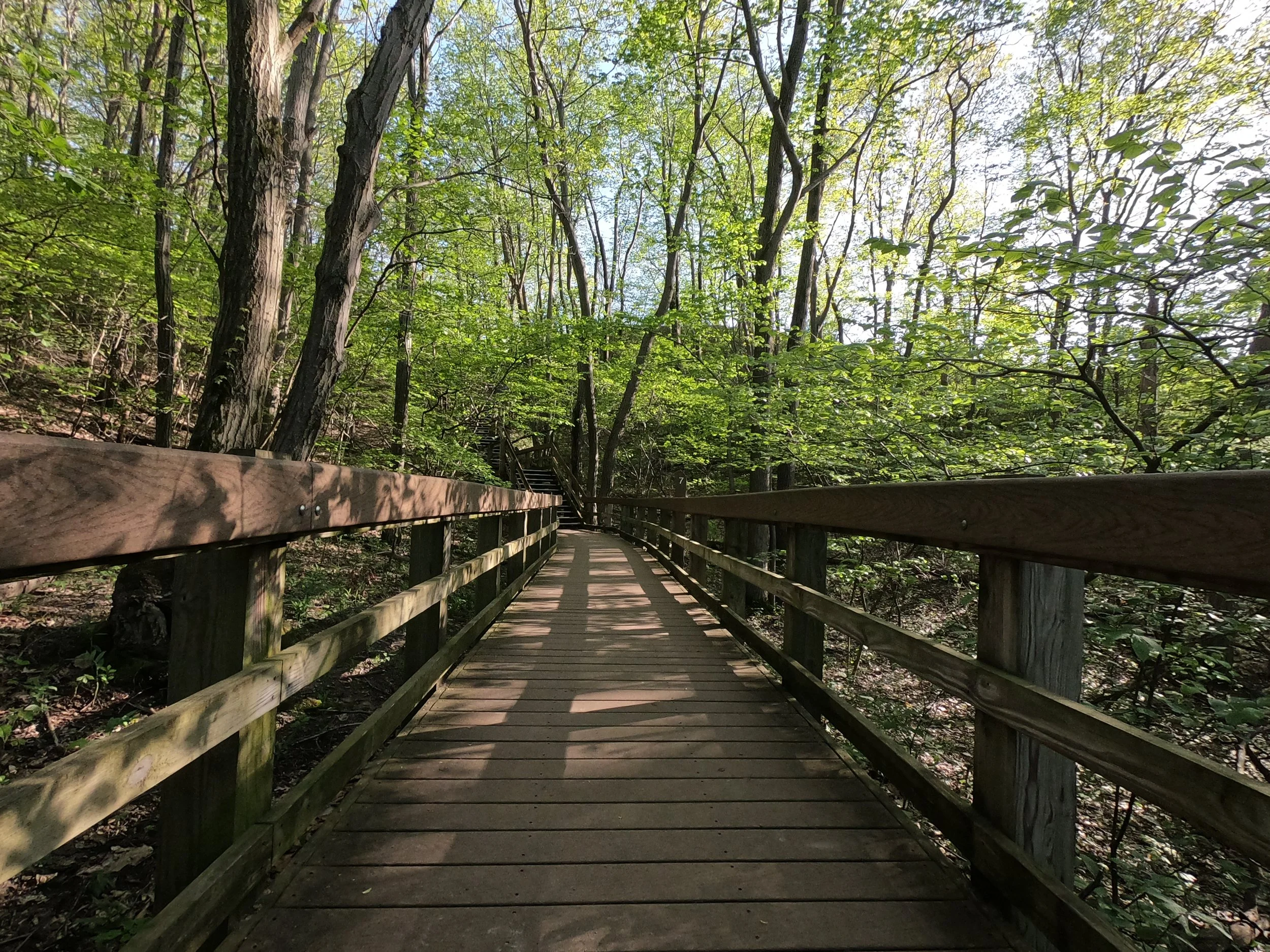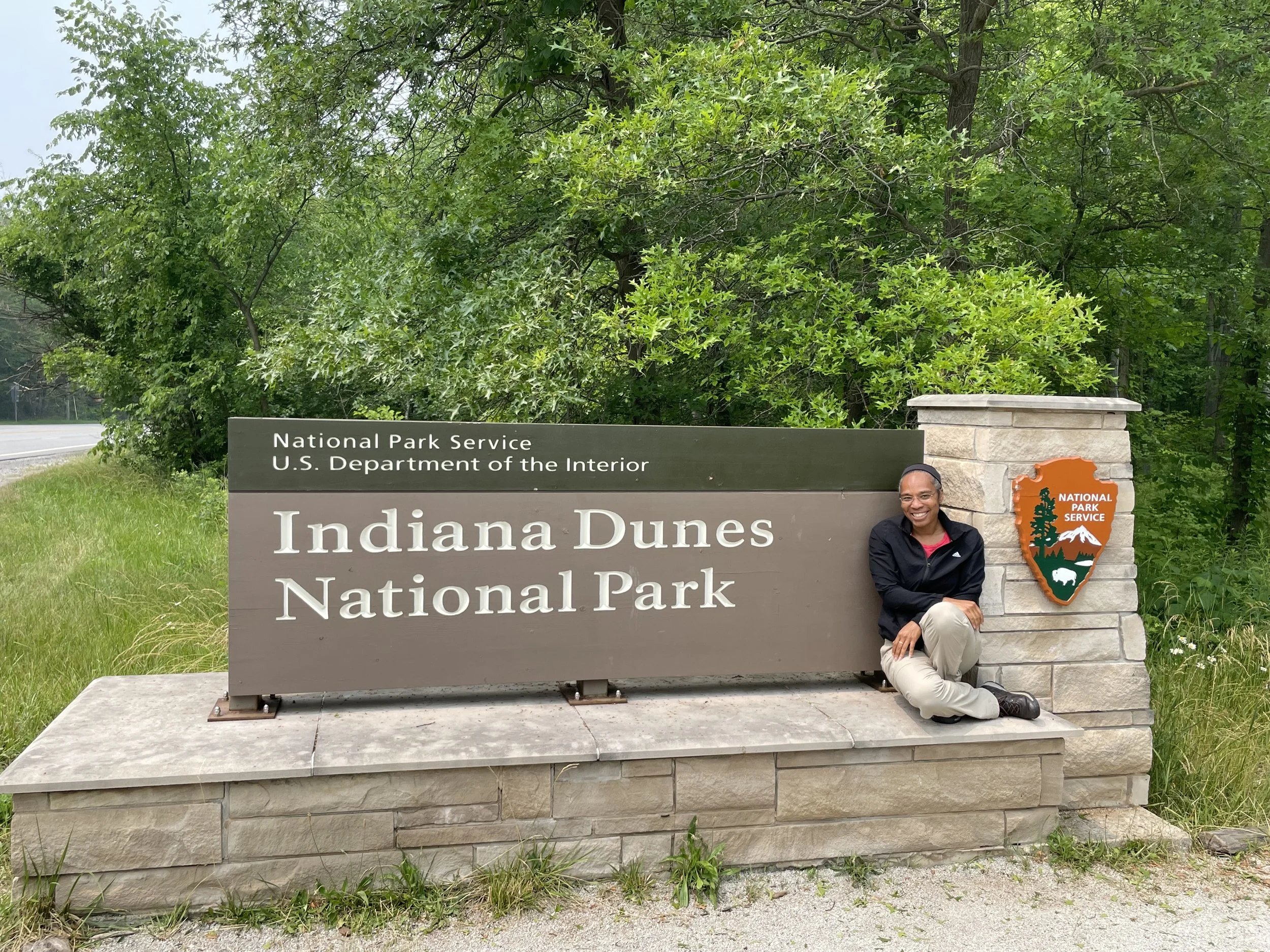# 2 Indiana Dunes National Park, Indiana
I started visiting Indiana Dunes before it officially became a national park. Back then, it was just Indiana Dunes State Park—a favorite local escape with a loyal following. These days, the area is split between sections managed by the Indiana Department of Natural Resources and others operated by the National Park Service.
Indiana Dunes is my “local” national park. It’s only a 45-minute to one-hour drive from Chicago, which makes it perfect for a quick getaway when I need a break from the city. I’ve collected at least three passport stamps over the years and was genuinely excited when they finally put up a proper national park sign. Naturally, I had to stop for a photo. I’ve visited the Dunes in every season, and it’s beautiful year-round—from snow-covered trails to sun-soaked beaches.
There’s a challenge here called the Diana of the Dunes Dare—a short but intense hike that takes you up the park’s three tallest sand dunes in a loop. It’s named after Alice Gray (aka “Diana of the Dunes”), a Chicago native who famously left city life behind in the early 1900s to live off-grid in the dunes and advocate for their preservation. I’ve hiked it several times over the years, and without fail, there’s always some industrious person running the trail loop multiple times. These days, I still enjoy sandy hikes in the summer and crisp bike rides through the park’s trails in fall.
A Bit About the Park
Located along the southern tip of Lake Michigan, Indiana Dunes National Park became the 61st national park in the U.S. in 2019. But the fight to protect this area started long before that. Conservationists first pushed to preserve the dunes in the early 20th century, recognizing the unique mix of ecosystems and the rare biodiversity here. What resulted is one of the most ecologically diverse national parks in the country—with over 1,100 native plant species packed into just 15,000 acres.
The park stretches across 15 miles of Lake Michigan shoreline and includes beaches, forests, wetlands, prairies, and—of course—dunes. Some tower over 120 feet high.
Indiana Dunes Visitor Center
Visitor Centers
There are two main visitor hubs:
Indiana Dunes Visitor Center (📍1215 N State Road 49, Porter, IN 46304) – This is the main National Park Service visitor center and your go-to for maps, passport stamps, ranger advice, and exhibits. The parking lot is large, and it’s close to the highway.
Indiana Dunes State Park Nature Center (📍1600 N 25 E, Chesterton, IN 46304) – Operated by the state, this center offers nature programs and additional hiking resources. It’s located deeper into the state park side, so it’s a good stop if you’re heading to the beach or the trails from that entrance.
Fees & Passes
Indiana Dunes National Park charges a $25 per vehicle entrance fee, valid for 7 days.
If you have the America the Beautiful pass, you’re covered for the NPS sections.
Indiana Dunes State Park charges a separate entrance fee of $7 (IN residents) or $12 (non-residents) per car.
If you’re planning to visit both in the same day, just be aware that you’ll be paying both fees unless you have the appropriate pass.
Most Visited Areas
West Beach – Probably the most developed area of the national park. There’s a beach, bathhouse, picnic area, and a few solid trail options. Expect crowds in summer.
Dune Succession Trail – A favorite short hike (0.9 miles) that climbs stairs through the dunes and gives you a great view of the lake and Chicago skyline on clear days.
Mount Baldy – One of the tallest dunes in the park. You can view it from a distance or join a ranger-led tour to climb it.
Portage Lakefront & Riverwalk – A newer addition, offering a boardwalk, fishing pier, and lake views.
Cowles Bog Trail – A more rugged trail through wetlands, forests, and dunes. Around 4.7 miles round-trip and one of the more diverse hikes in the park.
Best Hikes
Diana of the Dunes Dare (3 Dunes Challenge – State Park side)
This short but strenuous hike takes you up three of the tallest dunes in the park. It’s just 1.5 miles long, but the elevation changes make it a real leg-burner. Named in honor of Alice Gray (aka “Diana of the Dunes”), a local legend who fought to preserve the area and famously lived in a dune shack in the early 1900s.
Heron Rookery Trail
A peaceful woodland trail especially nice in spring when the wildflowers bloom. Around 3.3 miles out-and-back.
Paul H. Douglas Trail (Miller Woods)
This lesser-visited trail starts near Gary, Indiana, and offers a great look at dunes, oak savanna, and wetlands. Ends at the beach.
Best Places to Take Photos
The National Park sign near the main entrance (yes, finally!)
Top of the Dune Succession Trail staircase at West Beach
Mount Baldy overlook at sunset
Along the boardwalks at Portage Lakefront or Cowles Bog
The 3 Dunes Challenge summit—bonus points if you’re sweaty and smiling
Accessibility
The Indiana Dunes Visitor Center is fully accessible.
West Beach has beach mats in the summer and accessible picnic areas.
Some trails (like Portage Lakefront’s boardwalk and parts of West Beach) are wheelchair- and stroller-friendly.
The park offers beach wheelchairs on a first-come, first-served basis at some locations.
Other Helpful Info
Parking lots fill up fast on hot weekends—arrive early if you’re planning a beach day.
There are train options from Chicago (via the South Shore Line), which drop you near some park sections if you want to skip the drive.
Swimming is allowed at multiple beaches but there are no lifeguards. Conditions can change quickly, so pay attention to the safety flags.
Tick season is real. Wear bug spray and do a quick check after hikes, especially in wooded or marshy areas.
Indiana Dunes may not be the most dramatic national park in the system, but it’s one of the most accessible—and for me, one of the most personal. Whether I’m walking the trails solo in early spring or catching a warm summer sunset by the lake, it always offers a moment of stillness and a break from city life. And sometimes, that’s exactly what you need.

